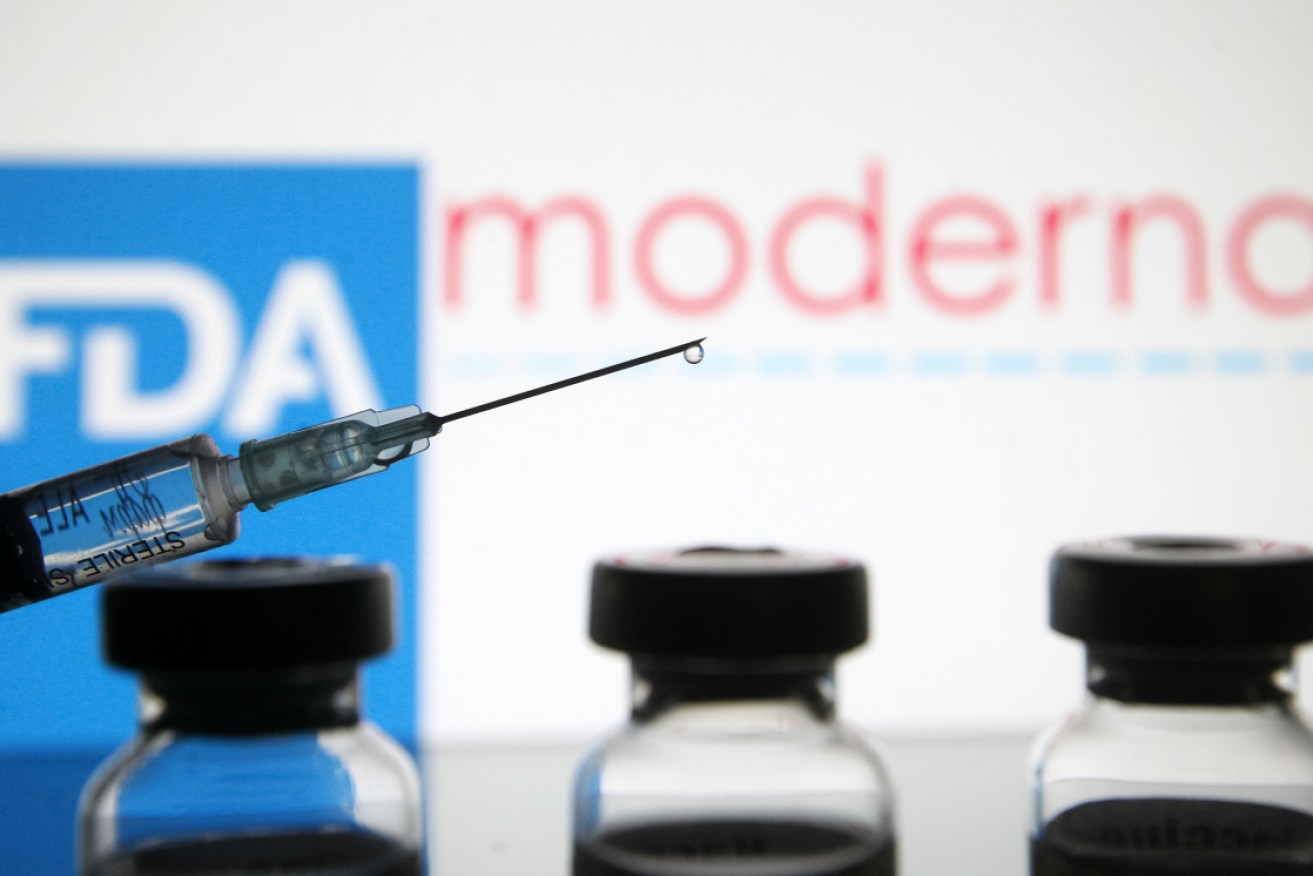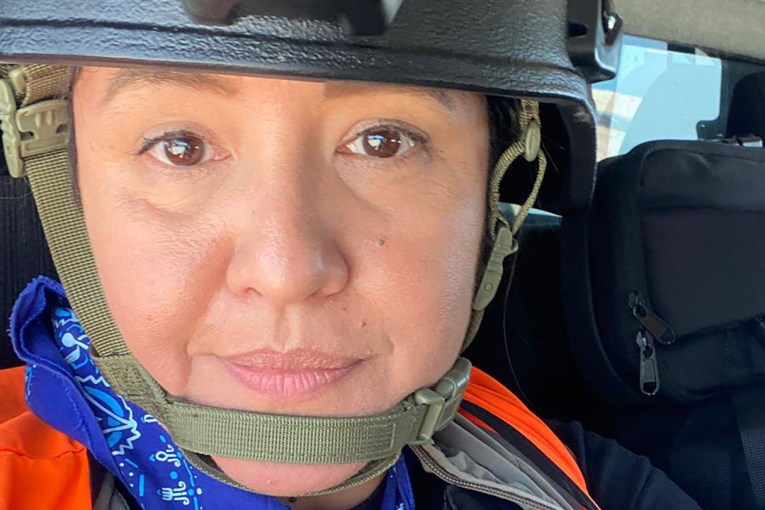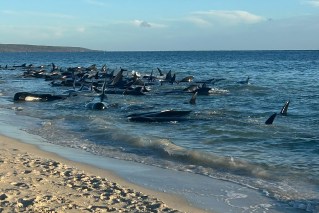‘Get on with it’: mRNA vaccine production delays under fire


The government is in "discussions" with Moderna on local manufacturing – but there's no hard timelines attached. Photo: AP
Nine months after former science minister Karen Andrews said it could be “nine to 12 months” before Australia began manufacturing the mRNA vaccine, the government is about to start assessing expressions of interest from local and global companies.
But with Australia still sweating on tens of millions of imported Pfizer and Moderna doses arriving on time, Labor is demanding the government move faster to set up local production of the cutting-edge technology.
“A year after telling Australians it was working on mRNA vaccine manufacturing we are no closer to producing mRNA vaccines,” Labor’s shadow industry minister Ed Husic said.
“The Morrison government keeps kicking this down the road.”
Months to years for made-in-Australia mRNA
On Friday, applications close for the government’s ‘approach to market’ process, where pharmaceutical companies were invited to propose “a partnership approach with the government” on setting up mRNA manufacturing in Australia.
Short for ‘messenger RNA’, mRNA is the cutting-edge medical technology underpinning the world-leading Pfizer and Moderna COVID jabs.

The government wants mRNA vaccines made here. Photo: AAP
Last October, Ms Andrews said the government estimated a “nine-month to 12-month timeframe” before Australia had mRNA “production lines”.
In April, just after she left industry and became Home Affairs Minister, Ms Andrews said the government was assessing funding for mRNA projects in “the next few weeks”.
The government has also awarded about $4.3 million to consulting firm McKinsey, for “professional advice” on a “business case” for onshore mRNA production.
But nearly nine months from Ms Andrews’ October pledge, the government hasn’t even assessed applications.
Current Minister for Industry and Science Christian Porter believes it would more likely be in the “12 to 18 months” timeframe.
But in a Senate estimates hearing last month, Industry department officials said it could be “three to four years” before mRNA production began in Australia, if they decided to build new ‘greenfield’ facilities rather than retrofit existing ones, known as ‘brownfield’ sites.
Australian company BioCina expressed interest in licensing Pfizer’s vaccine for production.
The Victorian government pledged $50 million and set up its own mRNA department to accelerate production, while New South Wales has set up a pilot program.
‘Couldn’t have picked’ mRNA success
Few other nations have set up onshore mRNA facilities.
Moderna, which Mr Porter says is interested in discussions about Australian facilities, is based in the US but licenses its vaccine for production in only the Netherlands and Switzerland.
Pfizer, similarly based in the US, has locations in Australia already but is only producing mRNA vaccines in America and a small number of European factories.
TND reported on Wednesday that Pfizer is not planning to apply to the government’s approach to market.
Before COVID vaccines developed in 2020, mRNA jabs had never been produced at scale.
Australian National University infectious diseases expert Professor Peter Collignon told TND in April “you couldn’t have picked” the success of the Pfizer and Moderna vaccines ahead of time.
“That’s not what I would have put my money on six months ago,” he said.
Australian Academy of Science president John Shine said it was “easy in hindsight” but “there was absolutely no surety the [mRNA] vaccines would work”.
But Mr Husic said that, since the government committed to building mRNA facilities, they couldn’t rely on that excuse.
“They made announcements they could get this done. They believed it could be done, so why haven’t they got on with it?” Mr Husic asked.
Dr Archa Fox, an mRNA expert at the University of Western Australia’s School of Human and Molecular Sciences, said mRNA was actually a more “accessible” technology than it may seem.
“It’s not straightforward like a biscuit factory tweaking production, but it is a more accessible way of manufacturing,” she told TND.
“Right now, the hurdle is we’ve never done it before here, so we need time to get it up and running, but ultimately it’ll democratise vaccine production.
“It’s not insurmountable.”
Dr Fox said “the biggest hurdle” would be licensing and technology transfer, if an Australian company – like BioCina – wanted to produce vaccines like Pfizer or Moderna.
However, an Australian-designed vaccine wouldn’t have the same problems.
“This is not so complicated that people around the world couldn’t be setting it up. It’s not such ‘secret sauce’ technology. It’s something we can do,” Dr Fox said.
TND asked Mr Porter’s office what exactly the government hoped to build, in terms of number of facilities, locations, and output.
His office declined to elaborate, but in a press conference last week, the minister flagged hopes “to produce 25 million plus doses” each year.
Contained in Labor leader Anthony Albanese’s “four-point plan” for how the opposition would deal with COVID, is a pledge to “manufacture mRNA vaccines locally”.
Mr Husic said a Labor government would use its $15 billion ‘national reconstruction fund’ to fast-track mRNA production, but hadn’t set specifics on how many plants it wanted, or where.








